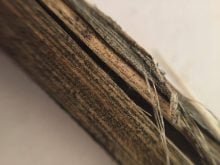Sometimes energy companies are prime suspects when it comes to clubroot contamination in western Canadian farmland. But Encana has developed strict cleaning procedures to minimize that risk, one company leader told FarmTech delegates in Edmonton.
Many of Encana’s Alberta sites tap into farmland in south central Alberta. These coalbed methane wells produce sweet gas and are about one kilometre deep. Encana has 11,000 km of pipeline, plus 13,000 natural gas wells in Alberta. The wells sit on 25 per cent of the land growing canola in the country, Andrea Bullinger said.
Read Also

Claas brings 1000 Series SP forage harvesters to Canada
In mid-August, Claas unveiled its new line of Jaguar forage harvesters at an event in Visalia, California, deep in the heart of that state’s dairy region.
“Do we bear some risk? You bet we bear some risk,” Bullinger said. She is a soil chemist and heads up Encana’s soils, vegetation, and spills management group in Canada.
The energy company puts in minimal disturbance sites, meaning they don’t build roads and drill on top of topsoil. The well sites are usually about 4 x 8 metres. When they install pipelines, they use a Cat to strip topsoil and plow into sub-soil, Bullinger said.
The faster Encana gets wells up and running, the more profit, which is vital with lower natural gas prices, Bullinger pointed out. But she added Encana doesn’t want the liability of contaminating farmland with clubroot or any other pests.
Encana was doing lots of drilling in Alberta between 2006 and 2008, Bullinger said. There were no regulatory requirements on biosecurity for energy companies. But there was a groundswell of concern among farmers as clubroot became a growing problem.
Farmer concern
By the end of 2007, 50 per cent of landowners were asking Encana about their clubroot mitigation plan and up to 25 per cent demanded the company clean and disinfect its equipment before setting foot their farms.
“One of the engineers described it as like being the bride the night before the wedding and hearing that you can’t go,” said Bullinger. “Because when we took a look at that meant for us — washing and disinfecting before we entered the site — it was a show-stopper.”
Washing and disinfecting the equipment used to construct one coalbed methane well would cost Encana about $43,000 and use 112,000 litres of water, Bullinger said. The company planned to drill 300 wells in the central Alberta in 2008. Disinfecting equipment would have cost $12 million and use 33 million litres of water.
Bullinger told delegates Encana’s engineers initially handed her numbers double those costs, but she cut them in half because she thought “they were a little hysterical,” and not accounting for increased efficiency over time.
Encana had better data for pipelines, Bullinger said. Cleaning the gear used to put in 443 miles of pipeline would ring up $7 million and use 26 million litres of water.
“Those are kind of scary numbers for us,” Bullinger said.
But because Encana’s wells rest on a quarter of Canada’s canola-producing land, Bullinger calculated they could impact over $1 billion in canola production, if canola was selling at $14 per bushel. Those are the types of numbers that make sense to engineers, Bullinger said. “A billion dollars is material, even to them.”
Bullinger and her colleagues began working with the Canadian Association of Petroleum Producers and Alberta Agriculture and Rural Development to cut their risk of spreading clubroot and other pests.
Clubroot mitigation
Encana employees and consultants try to enter the field when it’s dry and cold, Bullinger said, to reduce contamination risk. Summer means a higher contamination risk, so they don’t inspect wells as frequently in the summer. But regulations still require inspectors to check on wells monthly.
Before staff and contractors enter a new field, Encana requires them to hand clean equipment. Contractors and employees also have to wash vehicles as part of regular maintenance. “Vehicles or equipment that arrive dirty on our site will be sent back at the contractor’s cost. That only has to happen once or twice before they start bringing in clean equipment,” said Bullinger.
Encana also complies with county bylaws, Bullinger added.
Sign-off at Encana sites differs a little with each group. But they do take pictures of equipment when it arrives on site. Employees or inspectors sign or stamp a document confirming the equipment arrived clean, Bullinger said.
Farmers aren’t obligated to tell Encana about soil or pest issues, but Encana will change its practices to avoid knowingly spreading contaminated soil. “If we know you have clubroot, we’re not going to tell the ag fieldman,” Bullinger said.
Asked whether Encana would consider constructing roads into well sites, Bullinger said minimal disturbance sites made more economic sense with low natural gas prices. “For us it’s a bit of a show-stopper.”
Many farmers prefer minimal disturbance sites, as they can farm around them, Bullinger added. Encana is hesitant to make exceptions — concessions made to one landowner must be offered to all.
Encana is looking at putting four wells on one site, slanting them into the field, to further shrink the well site footprint.
Bullinger speaks only for Encana. Farmers dealing with other companies could look to Alberta’s Clubroot Management Plan for guidelines. Farmers can find the plan by visiting agriculture.alberta.ca and searching “clubroot management plan.”
The Canadian Association of Petroleum Producers has also published best practices to help the energy industry deal with clubroot. They can be found by searching “clubroot” at www.capp.ca.
















